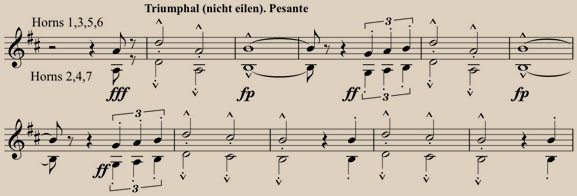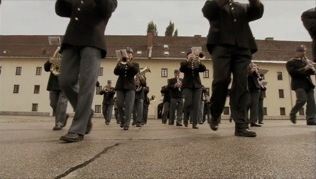 Play
Play
 Play
Play

-
A different type of march appears after twenty minutes of struggle and turmoil at the symphony’s triumphant finish. This one manages to be both confidently swaggering and hymn-like at the same time. It grows louder and mightier with each repetition, as evidenced by Mahler’s note in the score: “From here to the end, it is recommended to reinforce the horns until the overwhelming hymn-like chorale has reached the necessary volume. All horn players should stand up, to create the greatest possible impact. If necessary, a trumpet and a horn can be added.”



